The Relationship Between Traveling in Japan and Crab
When winter arrives in Japan, one delicacy immediately comes to mind: crab. For centuries, this sumptuous seafood has graced celebratory gatherings and banquet tables, cherished as a quintessential taste of the season. While Hokkaido and the Hokuriku region are renowned for their premium crab harvests, a rising culinary gem is capturing the hearts of overseas travelers — the all-you-can-eat crab experience in Osaka.
Why is Osaka emerging as a hotspot for crab lovers? The answer lies in its unbeatable accessibility combined with a vibrant food scene. Here, you can indulge in luscious crab, a luxury abroad, at prices that feel like a special secret only Japan can offer. When planning your Japanese adventure, adding "Osaka crab all-you-can-eat" alongside classic favorites like sushi and ramen is becoming a must-do on many travelers' lists.
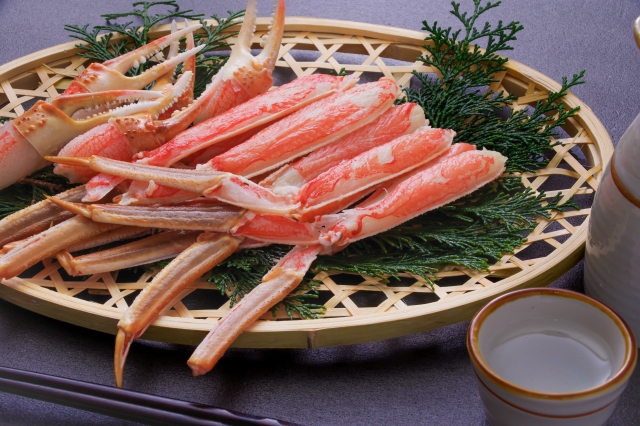
1. Representative Types of Crab You Can Taste in Japan
"Crab" might sound simple, but it unlocks a world of flavors with several signature species treasured in Japan. Getting to know these varieties will deepen your dining journey and complement your travel tales.
King Crab (Tarabagani)
- Famed for its impressive size, the king crab's shell belongs to the hermit crab family, giving it a bold appeal.
- Its thick, meaty legs make it a symbol of indulgence and grandeur.
- In all-you-can-eat settings, mountains of king crab legs piled high promise a feast that’s visually stunning as well as delicious.
- Best Season: November to February
The cold of winter tightens the flesh, making it the most flavorful time of year.
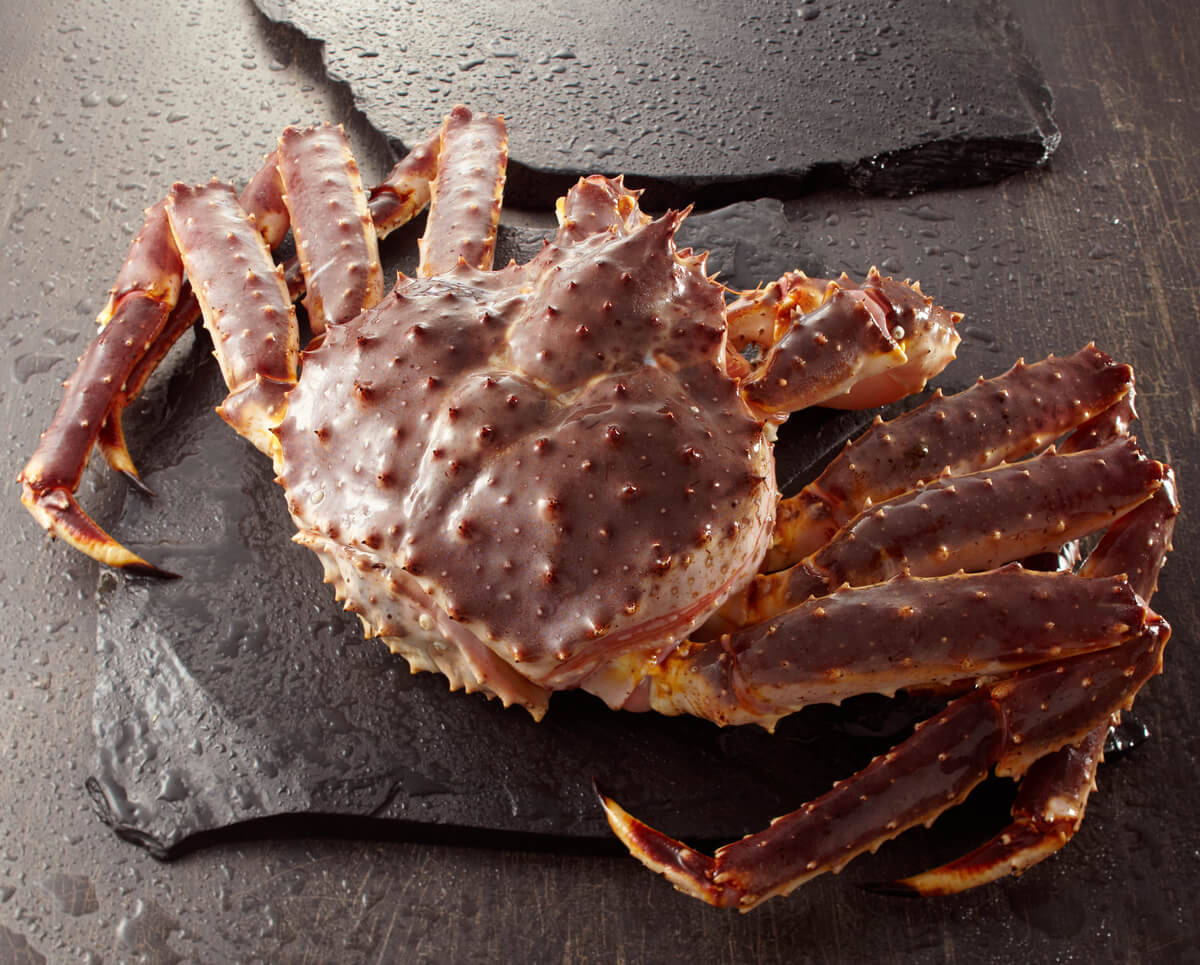
Snow Crab (Zuwaigani)
- Delicately sweet with a refined flavor that melts in your mouth.
- The tender leg meat is perfect for savoring in dishes like crab shabu-shabu or warming hot pots.
- Highly prized local varieties like Fukui’s “Echizen Crab” and Tottori’s “Matsuba Crab” enjoy cult status even among Japanese gourmets.
- Best Season: November to March
The peak season varies depending on the type, origin, and whether it’s male or female.
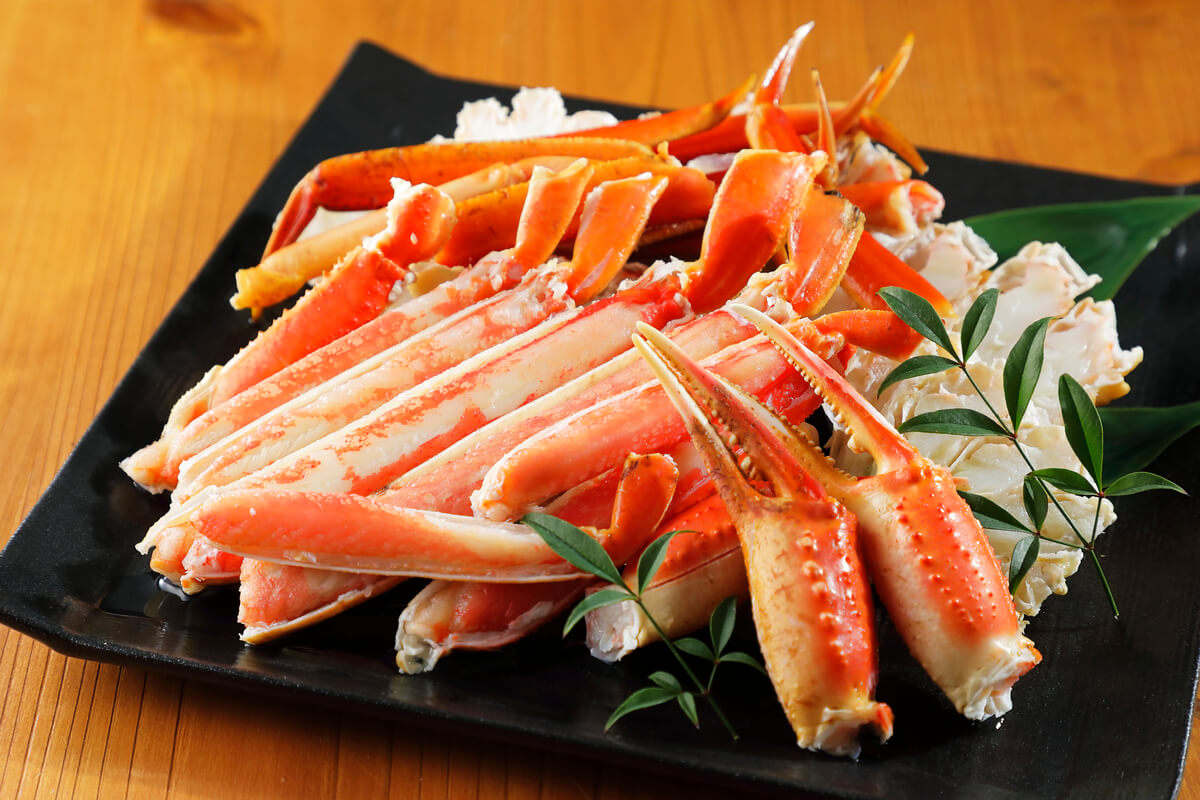
Horsehair Crab (Kegani)
- A Hokkaido specialty known for its rich, savory crab miso.
- Though smaller in size, the succulent insides of the shell deliver an irresistible delight that true crab enthusiasts love.
- Best Season: All Year Round
The best season differs by region, making it enjoyable throughout the year.
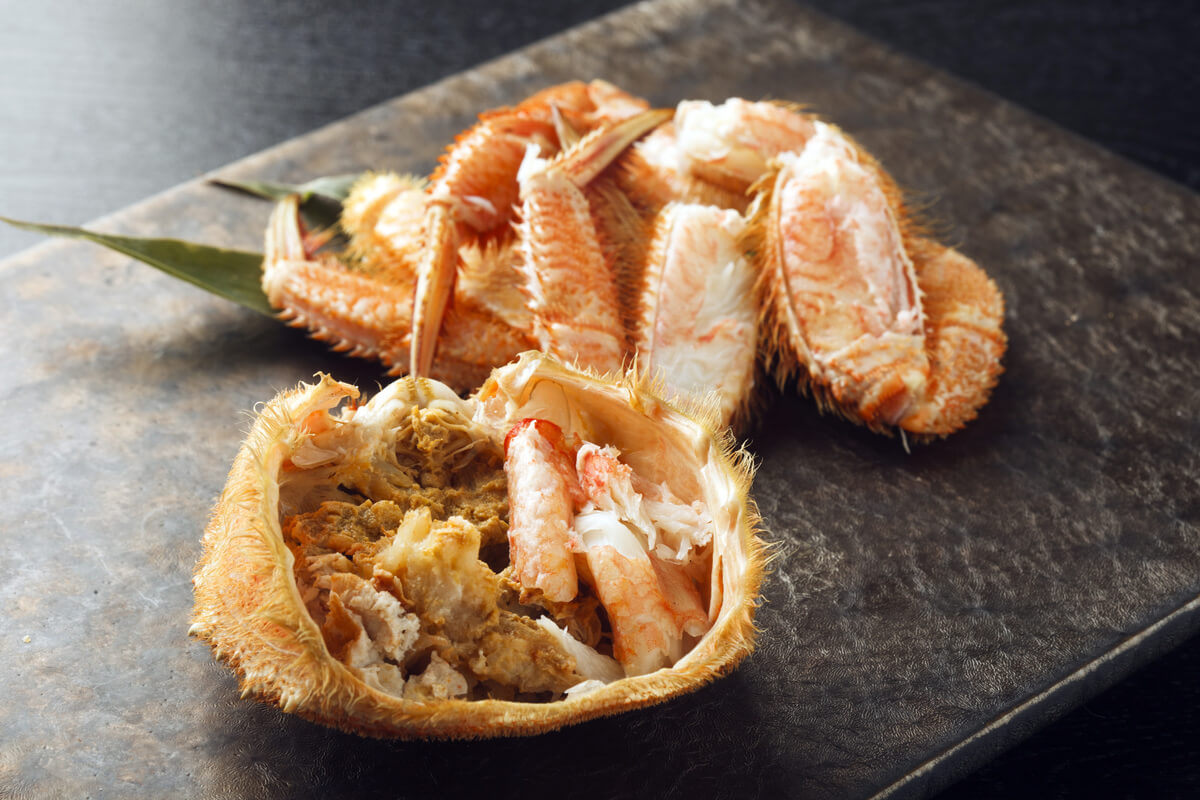
Sampling this trio of crabs side by side is one of Japan’s unique all-you-can-eat pleasures, offering a flavorful journey through regional treasures.
2. Popular Crab Cooking Styles
The charm of crab truly shines through its versatile preparations, and all-you-can-eat venues let you savor every enticing style in one unforgettable spread.
Crab Sashimi
Feature: A luxurious way to enjoy fresh crab thinly sliced and served raw with wasabi and soy sauce.
Taste: Melts in your mouth with a natural sweetness and a subtle aroma of the sea. Often made using zuwaigani.
Recommended Areas: Regions close to the catch areas, such as Hokkaido, Ishikawa, and Fukui.
Note: Since it's eaten raw, it's essential to choose restaurants that manage freshness properly.
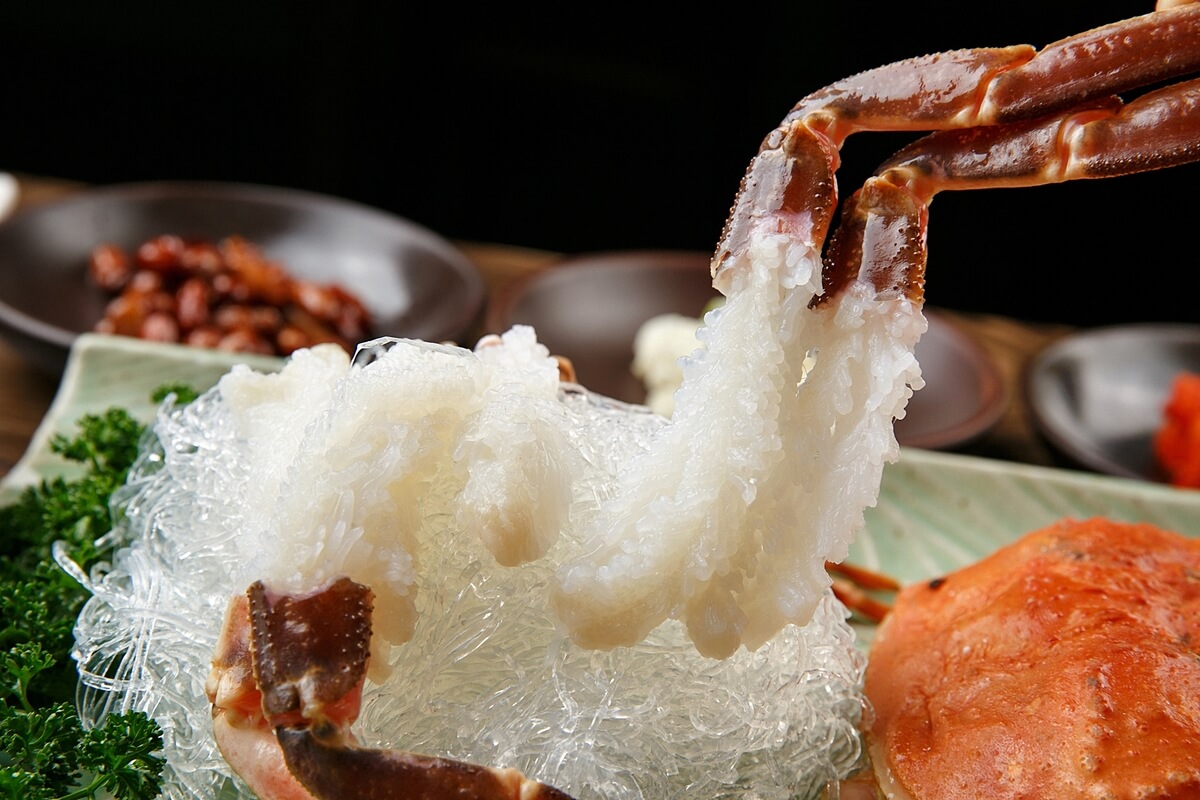
Crab Shabu-shabu
Feature: A winter favorite where raw crab legs are lightly dipped into hot broth before eating.
Taste: Dipping it brings out its natural sweetness and creates a fluffy, tender texture. Usually served with ponzu or sesame sauce.
Recommended Crabs: Zuwaigani and tarabagani.
Appeal: Offers a live cooking experience in front of you — perfect for sharing with a group.

Crab Hot Pot
Feature: A warm dish where crab is simmered with vegetables — a true winter tradition.
Taste: The rich umami of crab infuses into the broth and ingredients. Finishing with rice porridge (zosui) is the classic way to end the meal with full satisfaction.
Popular Styles: Variations include clear broth or miso-based depending on the region.
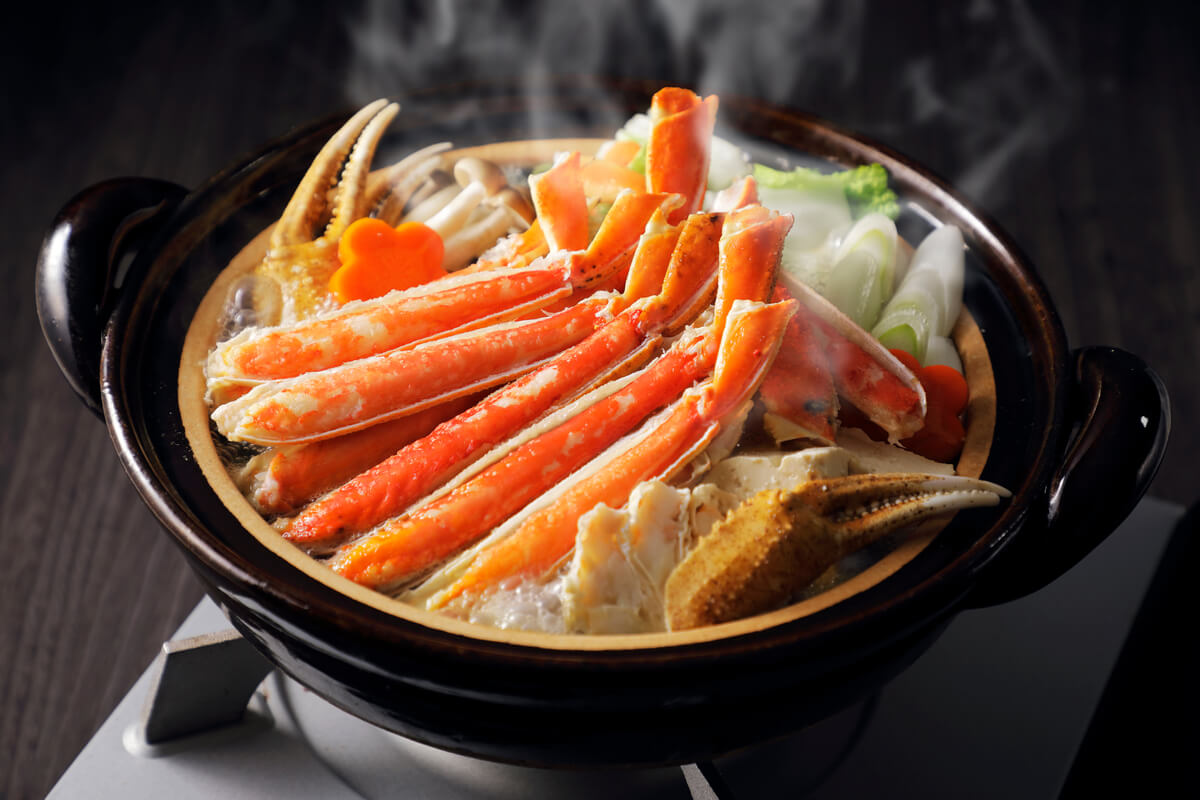
Grilled Crab
Feature: A bold style that simply grills crab over charcoal or a teppan grill.
Taste: Grilling enhances its aroma and concentrates its sweetness. Grilled tarabagani legs are especially voluminous and visually impressive.
How to Eat: Simple with lemon or ponzu is delicious, but “koura-yaki” (grilled crab miso in shell) is also a local favorite.
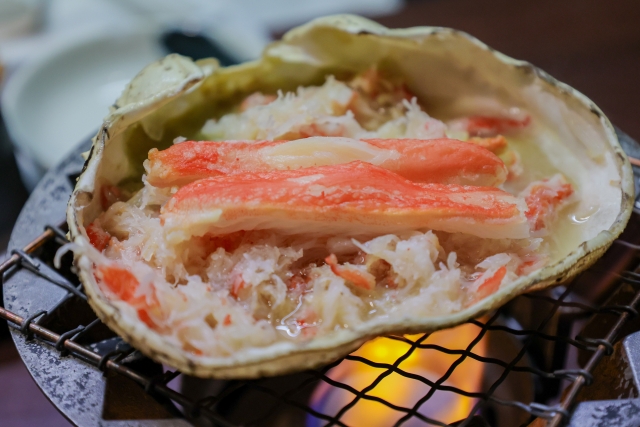
Miso Grilled in Shell
Feature: A dish where crab miso from kegani or zuwaigani is grilled inside its shell for a rich aroma.
Taste: Thick and creamy with a roasted aroma and deep sea flavor — pairs perfectly with sake.
Where to Try: Available at certain izakaya and specialty crab restaurants.
Crab Sushi and Crab Tempura — Arranged Dishes
Crab Sushi: Available in various styles like nigiri, gunkan-maki, and rolled sushi. A hit with tourists.
Crab Tempura: Zuwaigani legs are coated in a light, crispy batter — crunchy outside, juicy inside.
Western-Inspired Dishes: Crab gratin and croquettes are also popular and can be found in hotel buffets and cafes across Japan.
In Osaka’s all-you-can-eat restaurants, carefully curated courses invite you to indulge in several of these styles simultaneously, crafting a true crab lover’s feast like no other.
3. Reasons Why Osaka’s Crab All-You-Can-Eat is Popular
What makes Osaka’s crab all-you-can-eat scene a magnet for international visitors? Let’s uncover the irresistible charm:
- Bold All-You-Can-Eat Culture
Dubbed the "City of Gourmet Enthusiasm," Osaka embodies a lively, welcoming energy. Peers like sushi and kushikatsu share the stage with crab all-you-can-eat spots that embrace a generous, bold approach. - Outstanding Value
For about 6,000 to 10,000 yen, travelers can savor king crab, snow crab, and more — luxury delicacies elsewhere — within a set time frame. The experience often feels like a deliciously affordable treasure. - Excellent Accessibility
Many acclaimed restaurants cluster in the heart of Osaka, around areas like Umeda and Namba. Dropping in between sightseeing adventures is effortless. - Diverse Menu Choices
These venues complement their crab selections with sushi, tempura, fresh salads, and delightful desserts — perfect for groups seeking variety and satisfaction.
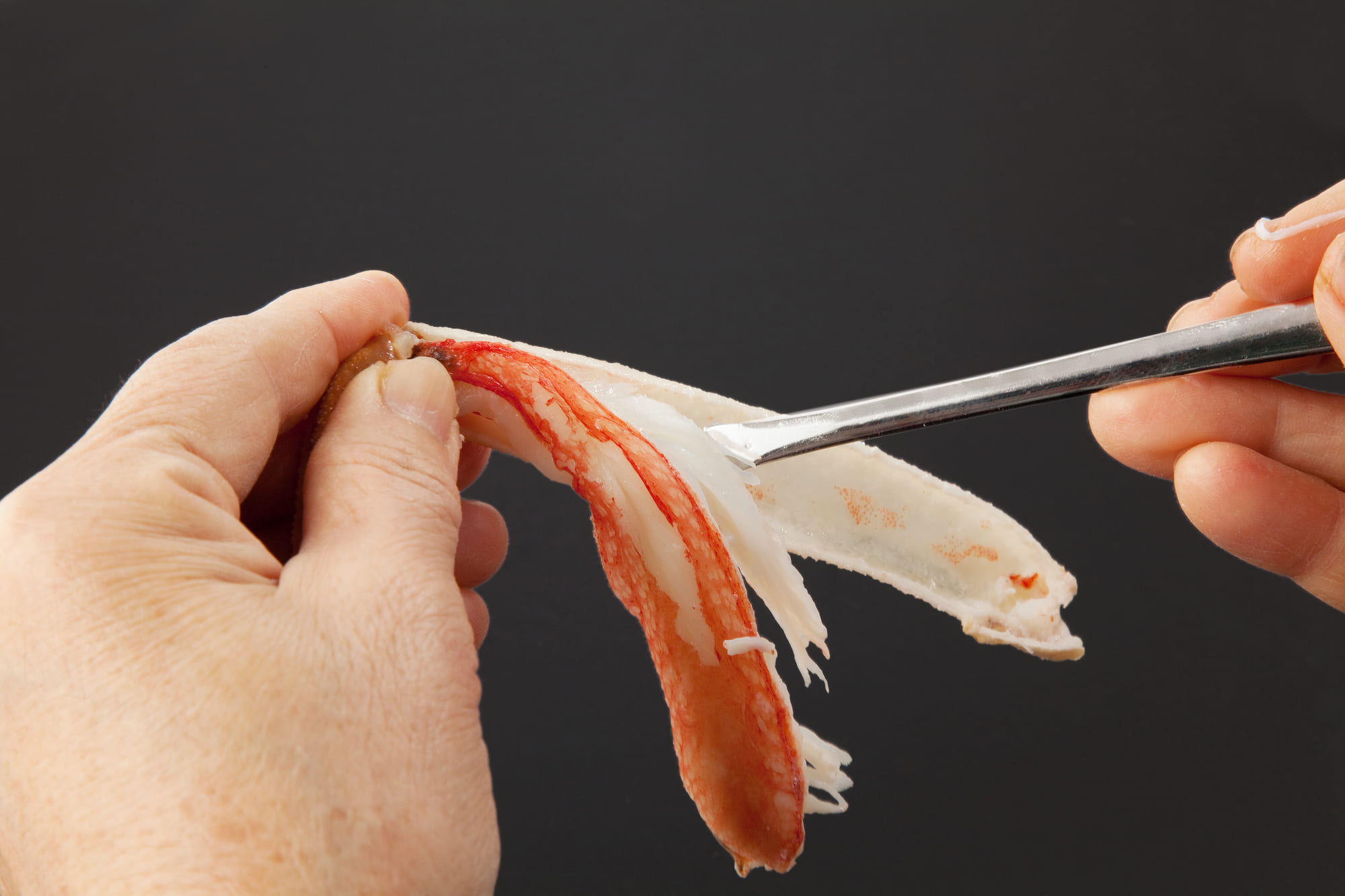
4. Recommended Crab All-You-Can-Eat Spots in Osaka
Kani Doraku
Synonymous with crab cuisine in Osaka, Kani Doraku boasts the iconic giant moving crab sign in Dotonbori — a beloved photo spot. Whether opting for their all-you-can-eat plans or elegant course meals, visitors find themselves delighted while soaking in lively sightseeing vibes.
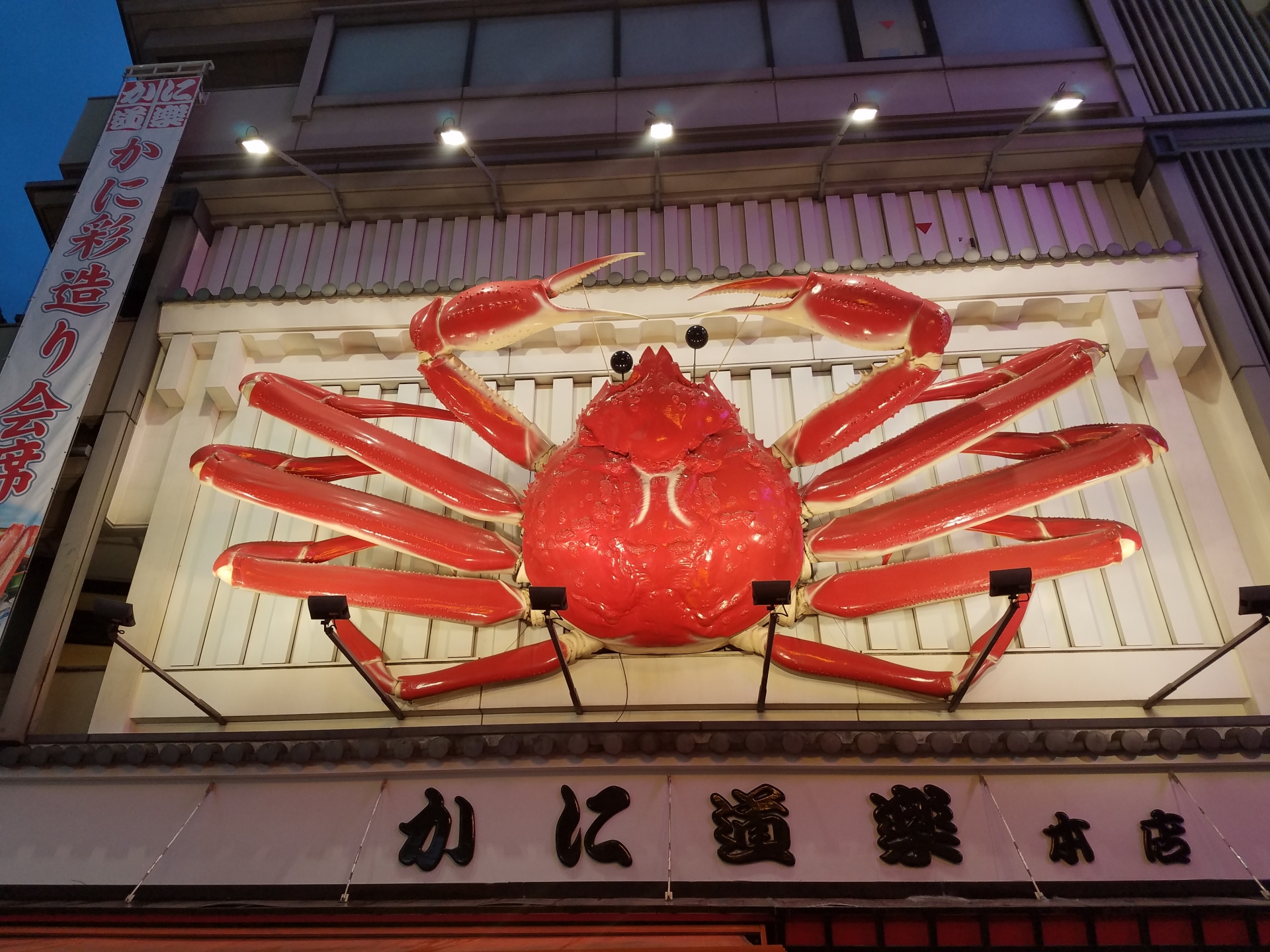
All-You-Can-Eat Specialized Restaurants in Umeda and Namba
At the bustling centers of Umeda and Namba, a treasure trove of specialized all-you-can-eat crab restaurants awaits. Some offer decadent menus featuring over 90 dishes within a two-hour indulgence limit — earning rave reviews from international guests.
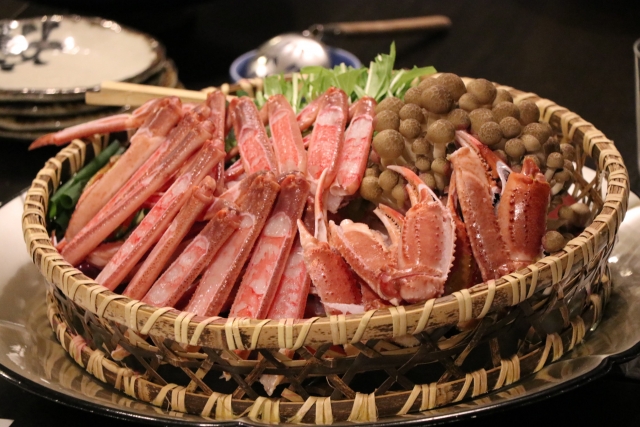
Seasonal Hotel Buffets
Winter also brings elegant “crab fairs” at luxury hotels, where guests can savor all-you-can-eat crab within a serene, refined atmosphere — a perfect choice for travelers seeking a sophisticated experience.
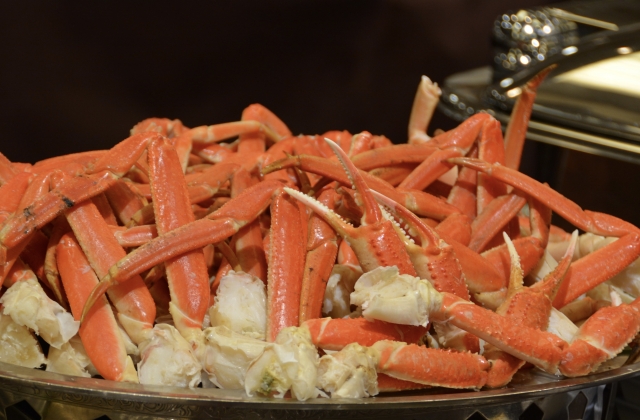
5. Crab Experiences Available Outside Osaka
While Osaka steals the spotlight, Japan’s diverse regions each offer distinct crab cultures worth exploring:
- Hokkaido: From lively markets to cozy izakayas, horsehair crab is a local treasure often prepared fresh at fishing port towns.
- Fukui, Tottori, Hyogo: Home to Japan’s famous branded snow crab varieties, these areas provide unique, locally cherished flavors.
- Kanazawa and Toyama: Nestled by the icy currents of the Sea of Japan, these spots are renowned for crab delicacies and popular winter sightseeing packages.
However, travel to these locales often requires longer journeys from Tokyo or Osaka, which can be challenging on brief trips. Osaka strikes a perfect balance between gourmet delight and convenient access.
6. Tips for Enjoying Crab in Japan
- Plan for the Season: November through March marks peak crab season, with December to February offering the fullest, most luscious meat.
- Book Early: Weekends and holidays fill popular all-you-can-eat spots quickly — securing your reservation ahead of time is key.
- Pair with Sightseeing: Choose restaurants near iconic sites like Osaka Castle, Dotonbori, or Universal Studios Japan to maximize your travel experience.
- Embrace Variety: Begin with simple boiled or sashimi-style crab, then savor the flavors of hot pots and grilled crab — a true Japanese culinary adventure.
7. In Conclusion: A Crab-Filled Journey Fulfilled in Osaka
As an emblem of Japan’s winter bounty, crab dining shines brightest in Osaka’s all-you-can-eat scene, where bold flavors meet exceptional value. Easily paired with sightseeing, it offers a luxurious touch even on short trips.
Far beyond a meal, Osaka’s crab indulgence represents a highlight that can define your Japan adventure. When winter brings you to Japan, be sure to dive into this lavish culinary experience — a feast that will warm your heart as much as your palate.
Search Restaurants by Destination

Search Restaurants by Popular Cuisines


Search Restaurants by Characteristics




